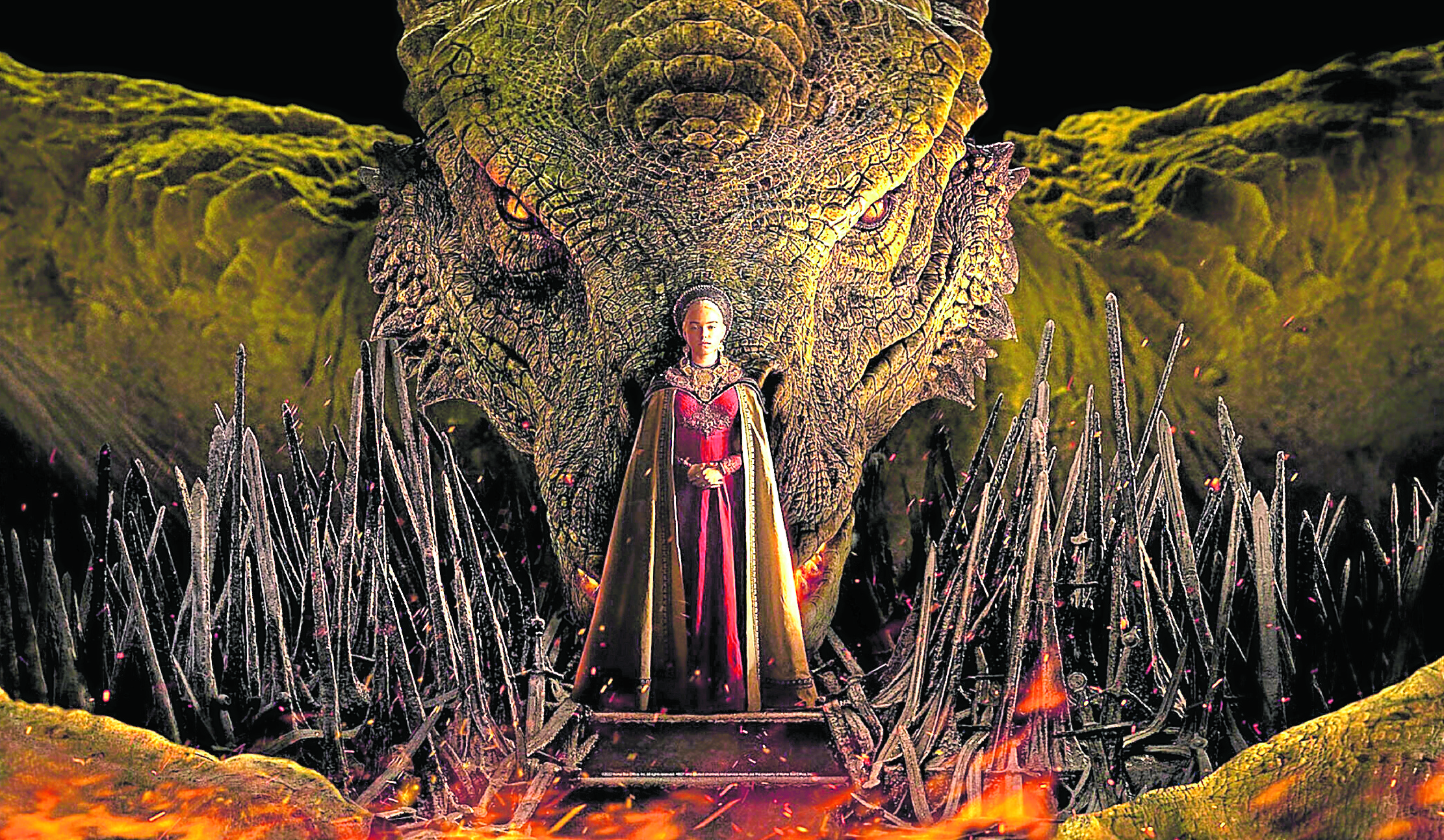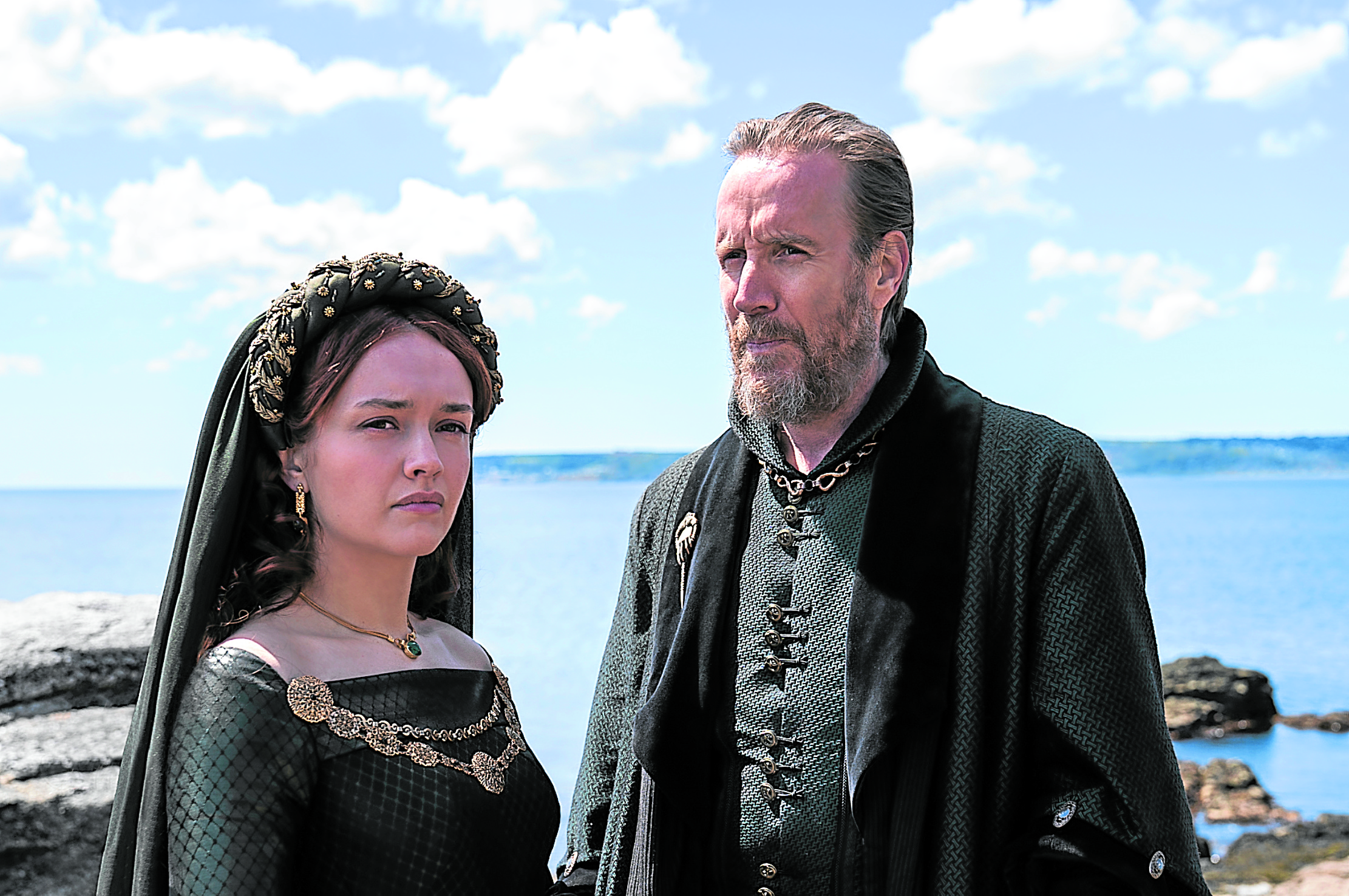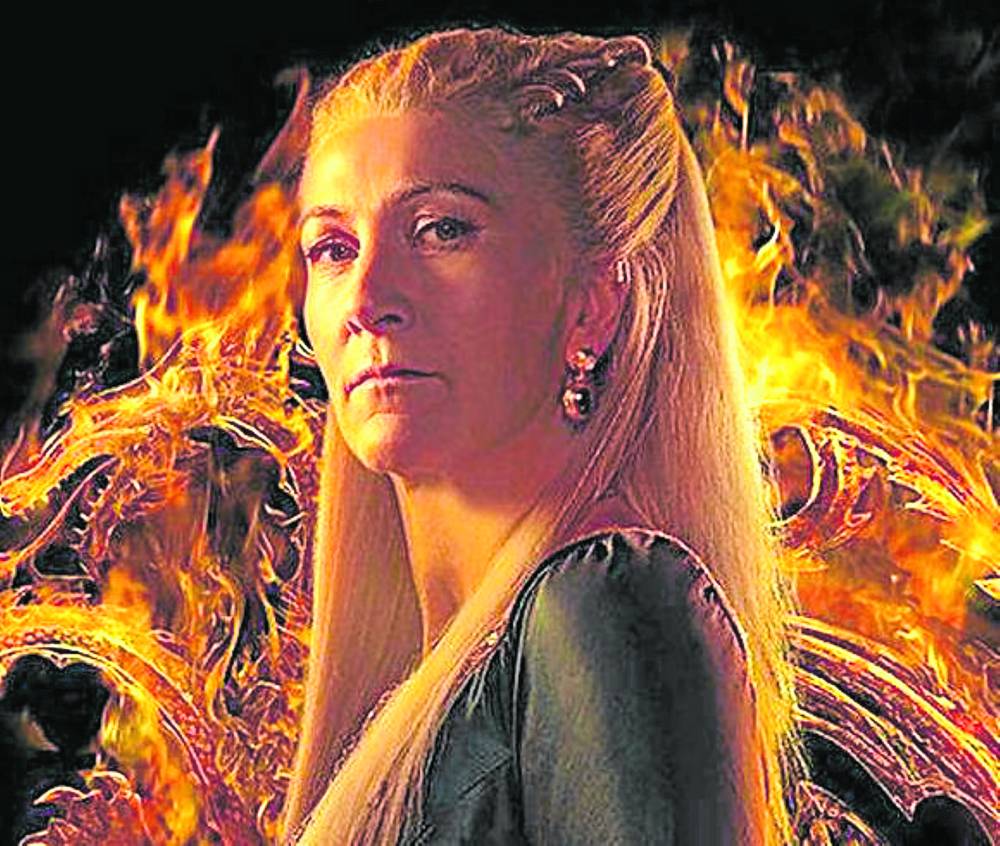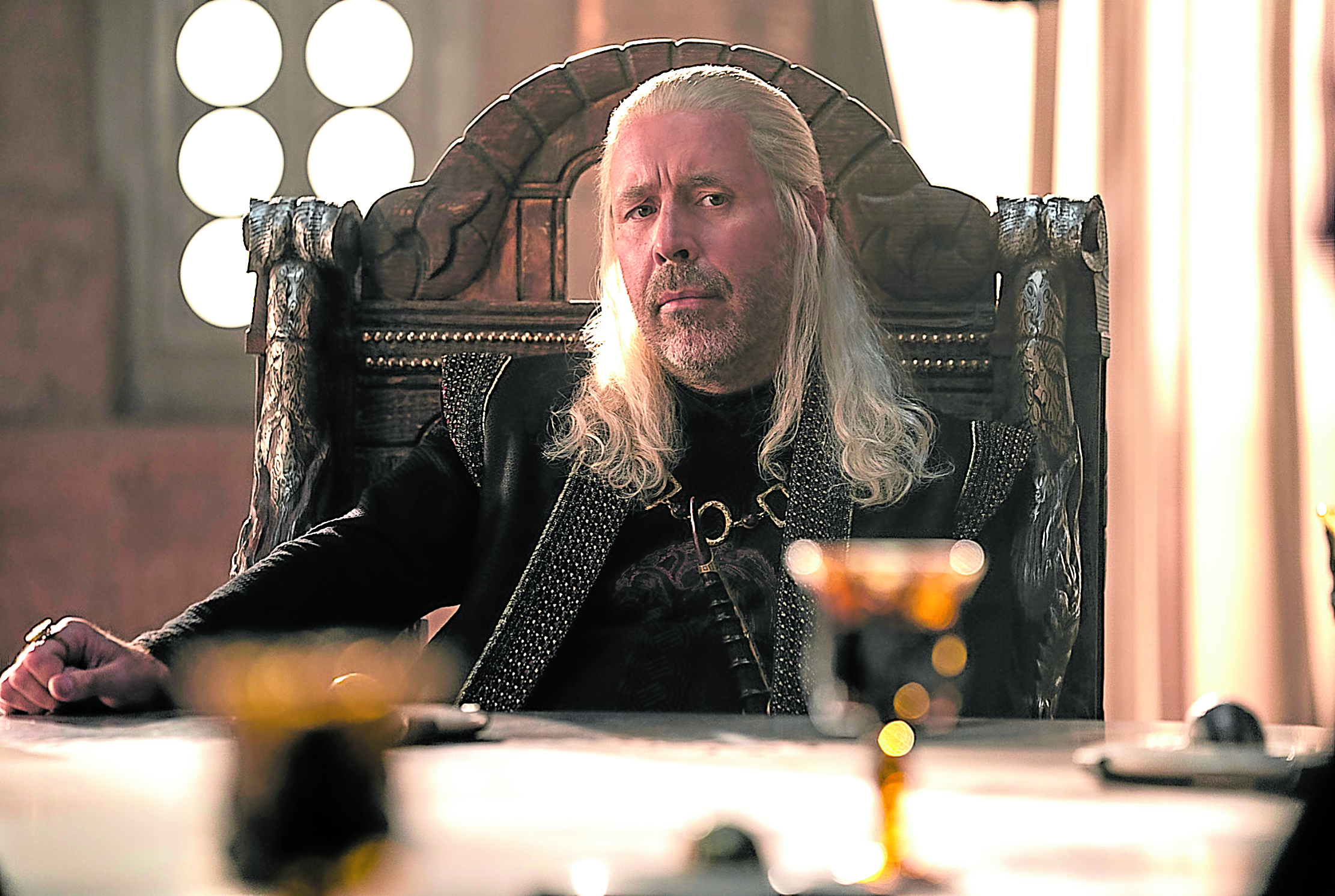Trouble in paradise: ‘House of the Dragon’ showrunners on the Targaryens’ generational war

Milly Alcock in “House of the Dragon”
As they say, the past is never where you think you left it. But that’s exactly where the creators of HBO’s “House of the Dragon” (HOTD), the eagerly anticipated prequel of “Game of Thrones” (GoT), wish to take its viewers—a monumental task that is as exciting as it is ambitious.
Long before the Starks and the Lannisters found themselves fighting tooth and nail over power, birth right and survival, it was the House Targaryen that once ruled all Seven Kingdoms on the continent of Westeros.
And why not? The Targaryens are mystical people with magic in their blood, so why shouldn’t anybody with the ability to control dragons be allowed to sit on the Iron Throne at King’s Landing?
Last week, we spoke to HOTD’s showrunners, writer-cocreator Ryan Condal and director Miguel Sapochnik, in a roundtable interview to discuss the 10-episode series.
“House of the Dragon”, which launches on HBO Go on Aug. 22, is based on author George RR Martin’s “Fire & Blood.” It takes place 172 years before the death of “Mad King” Aerys Targaryen (David Rintoul) and the birth of his daughter Daenerys (Emilia Clarke) in “Game of Thrones.”
It sees the Targaryens at the height of their power, wealth and influence—a dynasty that has ruled unchallenged for a century—before “the bloom comes off the rose.” But instead of different clans clashing over supremacy, HOTD is about a family caught in the crossfire of a generational war.
We can’t disclose details of the story at this point, but to get you up to speed about what Miguel and Ryan will discuss, it’s about King Viserys (Paddy Considine), who was chosen over his cousin Princess Rhaenys (Eve Best), the rightful Queen Who Never Was. In this world, men “would rather put the realm to the torch than see a woman rule” the Red Keep and ascend the Iron Throne.
But when it’s time for the sonless Viserys to choose an heir, he’s torn between his impetuous younger brother Daemon (Matt Smith) and his first-born daughter Princess Rhaenyra (Emily Alcock/Emma D’Arcy), “who was born with everything, except she wasn’t born a man.”
No, that isn’t a spoiler. In the trailer, in fact, Princess Rhaenys is seen warning Rhaenyra, “A woman would not inherit the Iron Throne, because that is the order of things.”
That may sound thematically intriguing. But make no mistake, the series, Ryan pointed out, doesn’t pretend to be what it is not.

Olivia Cooke (left) and Rhys Ifans
Mirror to modern society
“This is not a political show,” he said. “Even though a good amount of politics happens in it, we’re not trying to write a term paper here or teach anybody anything. We’re building on the themes, motifs and ideas that were explored in the original show and presenting them in a new way.
“Hopefully, it will somehow engage the audience, make them think. In this escapist high-fantasy or sci-fi world, you’re able to hold up a mirror to our modern society and have people take on an experience that they might not realize they’re having until they’ve already had it.
“I hope that we made something entertaining for viewers ultimately. This show is supposed to be fun escapism. At times, it can be bleak and tragic, but I think people will come to it to disappear into a different world.”
Interjecting with an interesting analogy, Miguel said, “It’s worth mentioning as well that the Targaryens couldn’t be closer to an Aryan race. One can easily see in the way they’re dressed that they’re fascists. And yet, we’re getting into this story about what’s it like to live in the shoes of these people, who don’t believe that what they’re doing is wrong.
“Interestingly, Paddy’s character is one of the most interesting ones because he’s a progressive Targaryen. But Ryan was right. We’re not saving lives here. We want people to be entertained by it primarily.”
On what they learned from the way “Game of Thrones” was handled in terms of plotting and character, Ryan mused about what was carried over to the new series.
“The key thing to bring over were the voice and tone of the original series … because it is inextricably linked to George’s work,” he said. “Once we were able to unearth exactly what that was and adjust the writing to the same direction, it was just a matter of making the show look similar.
“So, it was a constant balancing act, because you want people to go, ‘Oh, yes, that’s Westeros!’ But you also have to communicate the idea that this was a different era, because 172 years is a long time.
“The trick was figuring out what the production design should look like—what’s changed, and what has to stay exactly the same—before doing things that are unique to ‘House of the Dragon.’”

Eve Best as Princess Rhaenys Velaryon
Strong bonds
Asked to discuss how HOTD has veered away from the GoT blueprint, Miguel, who won an Emmy for helming GoT’s “Battle of the Bastards” episode in Season 6, recalled, “I got on board ‘Game of Thrones’ in the fifth season. And a lot of my first season was spent feeling like I was never going to get hired for the succeeding one.
“As things began to work out, I realized that it was actually that challenging first season that created a lot of strong bonds between myself, [creators] David [Benioff] and Dan [DB Weiss], particularly about the style and tone of the show.
“I worked really hard to understand what that tone they were talking about was. Usually, if I sign on as episodic director to anything, I’ll watch as much of the show as possible to see what the patterns are—simple things that give you a formula to work with. Over time, I was able to build on the style of it, and I became involved in making ‘Game of Thrones’ look a certain way, particularly where the battle scenes were involved.
“Here, the important thing was to keep doing what’s appropriate for the story. When we first meet everybody in this show, you see the opulence of the Targaryen empire at its height. So, you see sweeping camera movements to convey its beauty and elegance, like you’re watching a cross between ‘King and I’ and ‘Lawrence of Arabia.’
“But therein lies the secret. We tried to stick to what we already knew, knowing that because the storylines were very intimate and personal, we would eventually be forced to adjust our storytelling.
“There’s a very strong way of making ‘Game of Thrones,’ so if ain’t broke, don’t fix it. You need to give in to that. It’s simple and elegant, but at the same time, if you go underneath the bonnet, there’s a lot of complexity that becomes more than the sum of its parts.”
Asked to discuss the changes they made to the more imposing Iron Throne this season, Ryan explained, “Well, the way that George described the throne in the books was this grand thing made of 1,000 swords from conquered enemies. In ‘Game of Thrones,’ and certainly during the pilot stage, David and Dan just didn’t have the kind of resources we had.
“But we turned it into an interesting way of telling a bit about the history of Westeros and communicating the passage of time between GoT and HOTD, which you have to keep in mind was a more decadent age.
“The Targaryens are in power and unchallengeable. There has been peace and prosperity for over half a century. There are no wars, only tournaments. This era of affluence has allowed people to build and keep things from crumbling apart.
“We felt that the Iron Throne was the best way to demonstrate the greatness of the Targaryens visually and reimagine the throne in a way that spoke more to the imagery George had used in the books. That isn’t saying it’s not the same throne, because if you look very closely, it very much is … it’s just adorned with more swords and things around it. It allows for the audience to tell the story in their head that, at some point, something changes here.”

Paddy Considine is King Viserys Targaryen —PHOTOS COURTESY OF HBO GO
Two separate units
Miguel also shared with us what it was like working behind the scenes—like filming complex fight sequences or sensitive sex scenes with an intimacy coordinator. Shot in the United Kingdom, Spain and Portugal, the production had a crew of approximately 2,000 at the height of the pandemic.
“We had two completely separate functioning units, so we could shoot two things a day,” he shared. “And we were extremely lucky that we got very dedicated crews, which is rare. That made a huge difference.
“Usually, when you do a 230-day shoot, by Day 55, everyone’s like, ‘I don’t want to be here’ (laughs). And by Day 200, they’re all on their phones starting to figure out where their next job is going to be.
“Also, the way in which we had to shoot radically changed because of COVID. It was this terrible problem that, for me, felt like having both of my hands tied behind my back and my legs cut off, then being poked in the eyes blind. That was a real learning curve.
“We also had an intimacy coordinator, which was a very different experience. Sex and action scenes have a similarity, in which actors react in similar ways, particularly because they have to execute a certain choreography. So, there was a lot of adjusting in a world where, particularly with COVID, spontaneity is thrown out the window.”
“House of the Dragon” debuts on Aug. 22 on HBO Go.